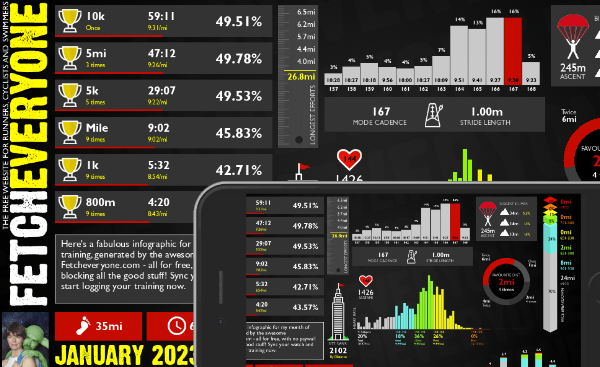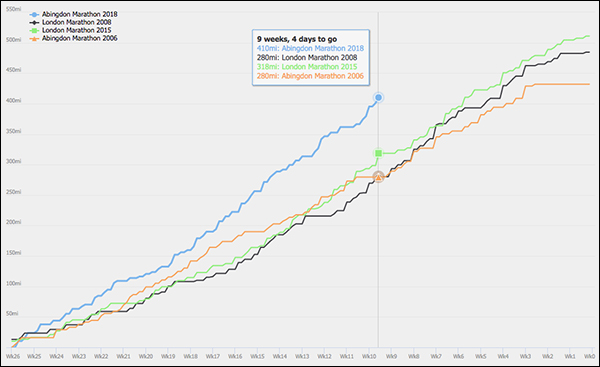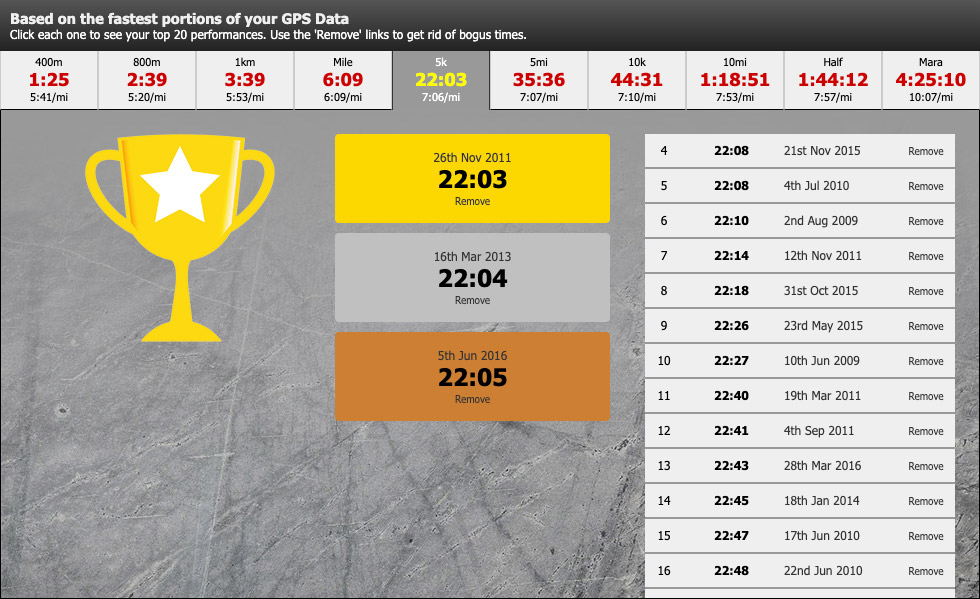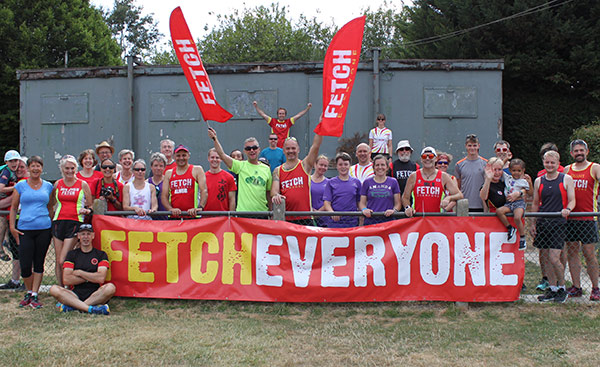Interval Training
Avoid queueing for warm lager and tiny ice creams

If you've ever queued indefinitely for the opportunity to buy over-priced choc ices and warm drinks in plastic glasses, you'll have a fair idea of how painful intervals can be. But in the world of running, the sort of intervals we deal with can be even more painful than shelling out a tenner for half a pint of lager and a Magnum.
A lot of cut-out-and-keep training plans will suggest that you do some intervals as part of the build up to your race. It's a session designed purely to help you cope with running at speed, and used well, it can do wonders for your times - although it's not exactly a walk in the park. Let's start by understanding what's involved.
When you decided to be a runner, the chances are you went through a period of mixing up running and walking, as you got used to the whole thing. For the same reason, you probably also like to run one day, and rest up for a day or two before running again. And if you're anything like me, occasionally you hit a week where you just need to lay off the running for a bit, because you just don't feel up for it.
Sounds familiar? Then you'll be pleased to know that interval training is based on exactly the same principles, albeit with a greater propensity for puking. In simple terms, you run fast for a bit, then you take a bit of time to recover, and then you do the same thing again, repeatedly. For example, you might do six half-mile efforts, with two minute recoveries in between, all sandwiched between a mile of warming up, and a mile of dragging your broken body home again.
That's the thing about intervals - they're hard work, despite the rest periods. You might sail through the first effort with the wind in your hair and a smile on your face, but by the time you've done three or four, the breaks feel like they're getting shorter, and your swearing gets louder - or at least it would do, if you had any breath to spare. But the buzz of elation that you feel for the rest of the day, knowing that you've *done* intervals is better than any other session.
If you'll pardon the pun, it's important not to rush into interval training, especially if you're a novice runner. Bones, tendons, muscles and brains need time to adapt to the stresses of regular training. But that's ok, because the great news is that you don't need to go out and do intervals from day one. If you're running less than about twenty miles a week, then a gradual and consistent increase in your mileage should be enough to improve your times without the need to do specific speed work of any kind.
Measure your progress every month or so, at a local race, or on your favourite route, and you should find that mileage alone will help you bring your times down. When you reach the point where you're running a decent mileage, but you've stopped improving, it's time to consider incorporating an interval training session into your weekly routine.
So how do intervals help? Hard-working muscles produce lactic acid. If you're running at a comfortable pace, your body has plenty of time to flush it away. But as you start to work harder and harder, there comes a point when your body can't do that quickly enough. The lactic acid starts to build up, leaving you with burning muscles and a desire to stop.
This point is called your lactic threshold, and interval training is all about encouraging your body to do all it can to offset this point, and to cope mentally when it does come - so you can run faster for longer. Your body responds to interval training by growing extra capillaries to transport more oxygen to your muscles, strengthening your heart to pump it round, and developing the capability to buffer more lactic acid.
The periods of effort need to be tough enough to push you just above your lactic threshold. Typically, your 5k pace is a good starting point, but if you use a heart rate monitor, you can aim for 85% of your working heart rate. You should aim to be able to run your final interval at the same pace you run your first one. Setting off like a scalded cat is counter-productive - it means you take longer to recover, and can compromise not just the rest of the session, but also your next training day. It can take a few attempts to get this right but when you do, the feeling of finishing strongly is great for your confidence.
Adequate recovery between efforts is just as important. Even though you've taken your foot off the gas pedal, your body is still working hard to bring things back under control, and it's all part of the adaptation process. Once again, it can take a bit of adjustment to get the length right, but you should at least feel capable of jogging by the time the recovery period ends. In terms of the number and length of efforts, there are too many variations to list or recommend, and the choice of session can depend on your goal race distance, your fitness level, and your own preferences. Common sessions include 10 x 400m (with 60s recoveries), right up to three or four mile-long efforts (with 3 minute recoveries). Personally, I think it's useful to choose a different session each week. It means you don't beat yourself up if there's no immediate improvement; it keeps things fresh and mentally stimulating; and when you do come round to the same session a month later, you should really nail it.
If you don't have a jazzy GPS watch, or a running track near you, you can still be in the gang. You can measure out a few streets or a footpath to get the approximate distance you need - or you can just base your intervals on time e.g. four minutes fast, with two minutes recovery - and run where the mood takes you.
Take some time to learn what works for you - it's better to undercook the pace and overcook the recoveries. As you go on, your pace will improve, your recoveries will be quicker, and you'll be able to run for longer. Don't try to do it all at once - if you're going to shorten your recovery time or add an extra interval, don't try to run them faster too! A weekly interval session (with a week off every now and then) will do wonders for your race times, and give you the pick of the ice creams, although it won't make the lager any cooler.

Picture: Getty Images / Marilyn Nieves
The most popular are sessions like 10 x 400m (60s rests); 5 x 800m (2 min rests); 3 x 1 mile (3 min rests). But you can also get inventive / cruel, and mix things up e.g. a pyramid session: 400m, 800m, 1200m, 800m, 400m with rests between. Or if it takes you about 8 minutes to run a mile, make the recoveries "10 mins minus your mile time" - so if you slouch, you get less recovery time.
If you've got a friend to run with, try running in opposite directions around a lake - one of you at pace, the other taking it easy. When you pass each other, you change roles.
So long as you remember the core reasoning behind what you're doing, you can play about with the session to keep it fun. You'll still be swearing by the end though.

Monthly Summary
A brand new shareable infographic showing a colourful breakdown of your training month.

Marathon Prediction
We delve deeper to give you greater insights when working out your goal marathon time.

Pre-race Training Analysis
See your accumulated mileage in the weeks leading up to any event in your portfolio, and compare it to your other performances

Your 365 Day Totals
Peaks and troughs in training aren't easy to find. Unless you use this graph. Find out what your peak training volume really is

Benchmarks
See the fastest portions from all your training runs. Filter by time to give you recent bests to aim at. Every distance from 400m to marathon.

Fetch Everyone Running Club
Join our UKA-affiliated club for event discounts, London Marathon ballot places, the chance to get funded for coaching qualifications, and a warm feeling inside.

Leave a comment...
-
Another fabby article Fetch. Fun and informative. Intervals are awesome. Painful exhausting dauntings challenging sweaty and huffy puffy... but awesome nonetheless! :-)G
HappyG(rrr)
-
No popcorn then?!
Angus Clydesdale
-
I've discovered the couch to 5k programme makes a good intro to interval running with it's run 1 minute walk 1 minute routine so interval training isn't just for fitties...
Making_Tracks
-
Having just done my 400's this morning I can vouch for how painful they are....
RFJ
-
You need two items of equipment for a successful intervals session - a stopwatch to time each effort and a bucket to puke into at the end. Lager doesn't help.
RichHL
-
Good enough way of steering normal runners:-) As a streaker I have alternative methods of 'Adequate Recovery' e.g A slow 1-5 miles ( but not walking)

UltraDunc
-
Have started to enjoy intervals. This week's was 1.6k wu/wd with 15 x 200m fast (16/18kph) & 200m slow (10kph) on a treadmill. Hot hard and worthwhile.
mikep
-
I've just recently started doing these and am noticing a big difference in my general speed - hitting and beating PBs set 5 or 6 yrs ago. I also like doing them in a sick sort of way
PentlandPounder
-
If you are a statto like me then the 'mill is a big help and ensures your first and last interval are the same. I like pyramids - 4x100 4x200 4x400 4x200 4x100 running half the distance as recovery at half the pace. Can extend to do 200 400 800 or higher depending on race distance
NortonFlyer
-
BTW if the girl in the picture was involved intervals would bye much more do able!
NortonFlyer
-
Always remember that you must warm up and warm down when doing Intervals and be careful so important to undercook in the early sessions. Some of us aren't biomechanically suited to banging out good old fashioned 400m reps. Some are suited to longer reps. For example 15x200 is a session to train for. At the moment I reckon I could break myself trying that coz id try and run too fast! Interesting article and thought provoking feed back.
Muds
-
Nice article. Intervals demystified just a clear common sense explanation.
ADT75
-
i love the way you put everything into perspective - thanks again for a great article - interval training is just the natural progression of the walk- run - die - walk - run - die program I started out with:)
colettedeann
-
The hardest bit has got to be trying to make the last fast interval the same pace as your first interval. With MHR degradation this must mean you need to be fairly easy at the start in terms of pace. If your MHR goes above 85% on the last one however then surely you need to start the first one on about 70%? Or if you are an animal you can let the degradation happen and the last one will be at 100% MHR. Thoughts anyone?
mrmedia
-
took me ages to work out what the non running intervals were.
AddledAdder
-
i also remember hating them but the last couple of years i do enjoy them and indeed they do improve your speed ...
The RedRunner
-
A great article and helps to understand. So how does fartlek differ to intervals?
spida
-
Fartleks are intervals with no rules. No set distances no set paces - just mix up random paces and distances and have fun with it.
fetcheveryone
-
Excellent article and I love the last paragraph.
Snapstinget
-
Going to have to get back into intervals soon once I've rebuilt some base fitness...this brings back memories of that lovely near puking feeling...
Gooner
To comment, you need to sign in or sign up!